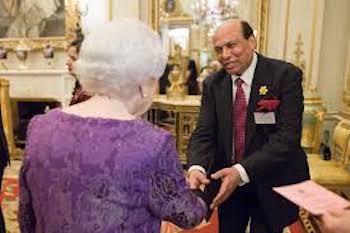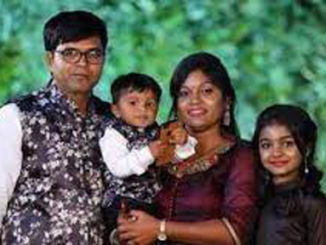
 As the Sikh community across the world remembers the sacrifice of the ‘Chaar Sahibzade’, Parivar Vichora Gurdwara deserves a special mention, as this is where the family of Guru Gobind Singh’s family got separated. Unfortunately, this holy site situated on the banks of river Sarsa became the site where the family became estranged.
As the Sikh community across the world remembers the sacrifice of the ‘Chaar Sahibzade’, Parivar Vichora Gurdwara deserves a special mention, as this is where the family of Guru Gobind Singh’s family got separated. Unfortunately, this holy site situated on the banks of river Sarsa became the site where the family became estranged.
After leaving Anandpur Sahib and the Anandgarh Fort, and after having fought tooth and nail with the Mughal forces and the Pahari Rajas, the Tenth Guru’s army reached the banks of Sarsa River. The Guru and his family were performing their daily rituals and offering prayers when the joint forces of the Mughal army and Ajmer Chand’s league of Rajput hill chieftains or the ‘Pahari rajas’ attacked the Sikhs, who were immersed in reciting Gurbani. Some Sikh soldiers, particularly the contingent of Bhai Uday Singh, and Sahibzada Baba Ajit Singh, marched ahead and confronted the enemy.
It was there that upon the conclusion of the recital of ‘Asa di Var,’ a collection of 24 stanzas written by the founder of Sikhism Guru Nanak that Guru Gobind Singh ordered his followers to cross over to the other side of the Sarsa river.
It is believed that Guru Gobind Singh had intended to march ahead with his family and his followers after crossing the river. But as Sirsa was in spate and the weather, too, was inclement, the family of the Tenth Guru got separated and dispersed in different directions. A large number of Sikhs have lost their lives fighting, while many others swept away by the rushing water of the Sarsa. While Guru Gobind Singh’s two wives, Mata Sahib Kaur and Mata Sundari accompanied Bhai Mani Singh to Delhi, his two sons, Sahibzadas Baba Ajit Singh and Baba Jujhar Singh, after successfully crossing Sarsa, reached a place near Ropar, which is now known as Gurdwara Bhathha Sahib. Moreover, Mata Gujari, the mother of Guru Gobind Singh, and his two younger sons Sahibzadas Baba Zorawar Singh and Baba Fateh Singh also got separated.
Sahibzada Zorawar Singh and Sahibzada Fateh Singh
The young and innocent boys, Sahibzada (Prince) Zorawar Singh and Sahibzada Fateh Singh attained martyrdom on 26, December, 1705, when they were brutally murdered by Wazir Khan the Mughal Governor of Sirhind.
The month of December has a special significance for the Sikh community. It was in this month that the combined forces of the Mughals and the small hill principalities used perfidious deceit to draw out Guru Gobind Singh, his family and followers from the Anandpur Sahib fortress and then sought their destruction.
These forces, under Wazir Khan, promised the Guru a safe passage from Anandpur Sahib but attacked them with overwhelming numbers when they came out. The two Sahibzadas’ aged nine years and seven years, along with their grandmother Mata Gurjar Kaur got separated from the main contingent as they left the fort.
They were promised refuge by an old retainer named Gangu in his native village Sahedi, but were handed over to the Sirhind administration of the Mughals, in what can be termed as the worst possible breach of trust and faith. It is notable here that the main contingent of the Sikhs fought to the last man at Chamkaur where Guru Gobind Singh took up a defensive position with a handful of Sikhs. The elder sons of the Guru, Sahibzada Ajit Singh and Sahibzada Jujhar Singh attained martyrdom while fighting in the Battle of Chamkaur.
The Guru lost his four sons and his mother in the ensuing tragic turn of events, but was saved in person by the bravery and sacrifice of his dedicated followers. Wazir Khan came back to Sirhind a defeated and frustrated man having failed to kill or arrest the Guru. He would have been filled with fear at the prospect of the Guru’s reprisal for the deceitful manner in which he had behaved. It was against the backdrop of this fear and frustration that he attempted to gain control over the young Sahibzadas’ by converting them to Islam and then keeping them captive in his custody.
In order to achieve his evil objective Wazir Khan subjected the young princes to the worst form of torture and intimidation, he kept them and their grandmother in a Thanda Burj (a cold tower) that was designed to capture the cool night breezes of air drawn over water channels; a perfect place for the summers but very uncomfortable indeed in the middle of winters and that too at night, especially so for the very young Sahibzadas’.
Wazir Khan subjected the princes to a trial in his court which lasted for two days. On the first day the princes were cajoled to embrace Islam and offered immense riches and power on agreeing to do so. The princes rejected the offer with absolute disdain which left Wazir Khan flustered and very angry. On the next day in court he tried to pass of the sentencing to Sher Mohd Khan, the Nawab of Malerkotla, whose two brothers had been killed in battle by Guru Gobind Singh.
Sher Mohd Kahn exhibited the highest form of chivalry by refusing to take revenge from ladies and children and advised Wazir Khan to release the Sahibzadas’ and their grandmother. It was at this stage that Wazir Khan committed the most gruesome act which goes against all tenets of honor and principle. He declared the two innocent boys to be enemies of the Mughal Empire and ordered them to be bricked alive. The execution was slated for the next day.
History chronicles other atrocities and torture being committed on the young boys even as last minute attempts were made to intimidate them into changing their mind and converting to Islam. The courageous princes refused and were incarcerated into the wall. The wall, however, broke down before the boys lost their breath and then was committed the most ghastly acts of all! Wazir Khan ordered the executioners to slit the throats of the young princes. On hearing the news of the martyrdom their grandmother Mata Gurjar Kaur also breathed her last.
The manner in which the two Sahibzadas stood against injustice and discrimination has no parallels in the annals of history. The ruthless depravity of their prosecutors constitutes the other side of the spectrum. The courage and fortitude exhibited by the young princes galvanised the Sikh/Khalsa community into rising against persecution and injustice. Guru Gobind Singh Ji charged his disciple, Baba Banda Singh Bahadur, to avenge the murder of the Sahibzadas. Baba Banda Singh Bahadur came from Nanded (in modern day Maharashtra) to Punjab for the ordained task, Sikhs in large numbers joined him. He first took Samana and Sadhaura on the periphery of Sirhind and finally attacked Wazir Khan. The ensuing clash known as the Battle of Chappar Chiri took place on 22 May 1710. It witnessed the larger Mughal forces being crushed by the Sikhs. Wazir Khan was killed in the battle and Sirhind occupied in the next two days.
The martyrdom of the Sahibzadas’ thus heralded the creation of the Sikh Empire from the debris of Mughal as well as the Afghan principalities, changing the very destiny of the South Asian region in general and Punjab in particular.





Be the first to comment